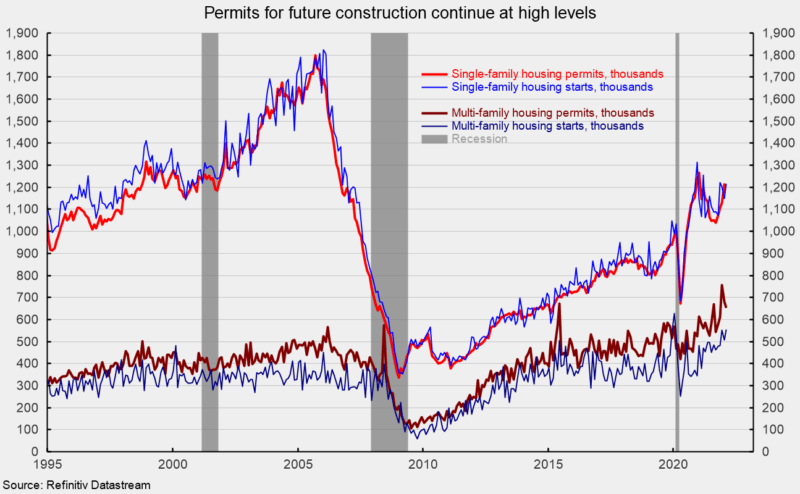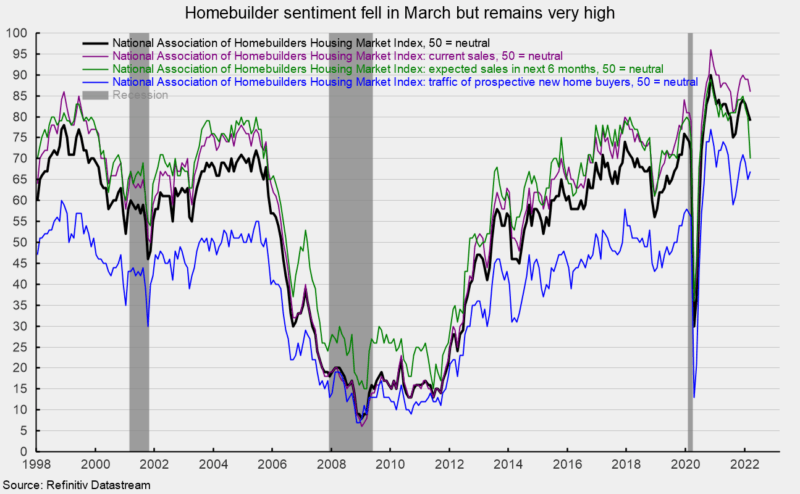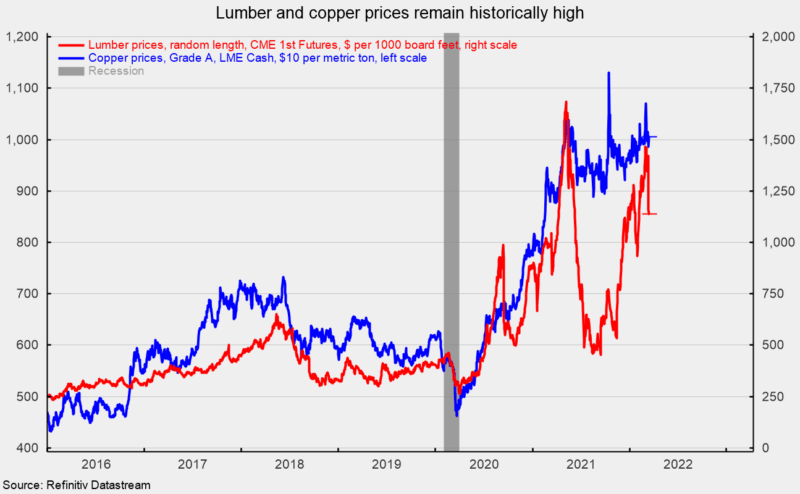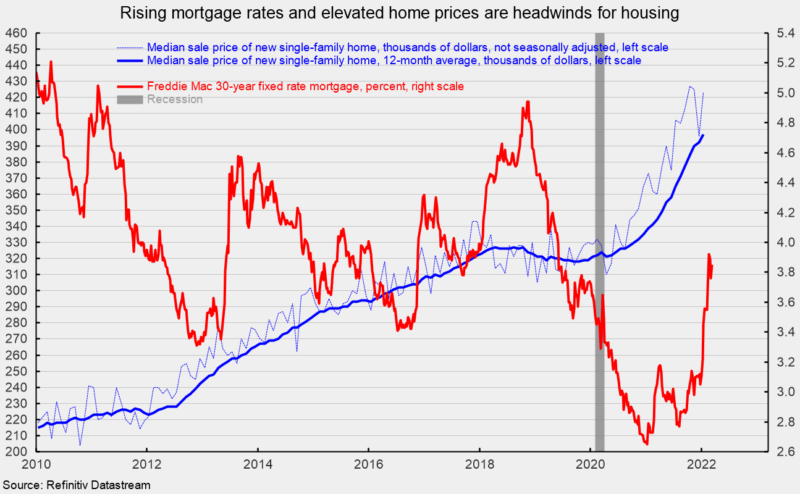Housing Permits Remained at a High Level in February but Builder Sentiment Fell in March
Total housing starts rose to a 1.769 million annual rate in February from a 1.657 million pace in January, a 6.8 percent increase. From a year ago, total starts are up 22.3 percent. However, total housing permits fell in February, posting a 1.9 percent drop to 1.859 million versus 1.895 million in January. Total permits are up 7.7 percent from the February 2021 level.
Starts in the dominant single-family segment posted a rate of 1.215 million in February versus 1.150 million in January, a gain of 5.7 percent and are up 13.7 percent from a year ago (see first chart). Single-family permits fell 0.5 percent to 1.207 million versus 1.213 million in January (see first chart).
Starts of multifamily structures with five or more units increased 0.8 percent to 501,000 and are up 37.3 percent over the past year while starts for the two- to four-family-unit segment were up 430.0 percent at a 53,000-unit pace versus 10,000 in January. Combined, multifamily starts were up 9.3 percent to 554,000 in February and show a gain of 46.6 percent from a year ago (see first chart). Multifamily permits for the 5-or-more group fell 4.5 percent to 597,000 while permits for the two-to-four-unit category sank 3.5 percent to 55,000. Combined, multifamily permits were 652,000, off 4.4 percent for the month but up 12.2 percent from a year ago (see first chart).
Meanwhile, the National Association of Home Builders’ Housing Market Index, a measure of homebuilder sentiment, fell in March, coming in at 79 from 81 in February, but still at a somewhat favorable level. Overall sentiment remains positive, but inflation, supply chain disruptions, and rising mortgage rates continue to be significant problems.
Two of the three components of the Housing Market Index fell in March. The expected single-family sales index fell sharply, dropping to 70 from 80 in the prior month, and the current single-family sales index was down to 86 from 89 in February, but the traffic of prospective buyers index rose slightly, rising two points to 67 (see second chart).
Input costs remain elevated, with lumber coming in at around $1,140 per 1,000 board feet in mid-March while copper was just over $10,000 per metric ton (see third chart). The high input costs will pressure profits at builders and may lead to more price increases for new homes (see fourth chart).
Furthermore, mortgage rates have continued to rise, with the rate on a 30-year fixed rate mortgage coming in at 3.85 percent in mid-March (see fourth chart). Higher home prices and higher mortgage rates are likely to be a drag on future housing activity.
After a pullback in activity in the first three quarters of 2021, single-family activity has shown renewed strength. While the implementation of permanent remote working arrangements for some employees may be providing continued support for housing demand, ongoing home price increases combined with the recent surge in mortgage rates will likely work to cool activity in coming months. Threats to future demand combined with elevated input costs are weighing on homebuilder sentiment. The outlook for housing is becoming more guarded.









